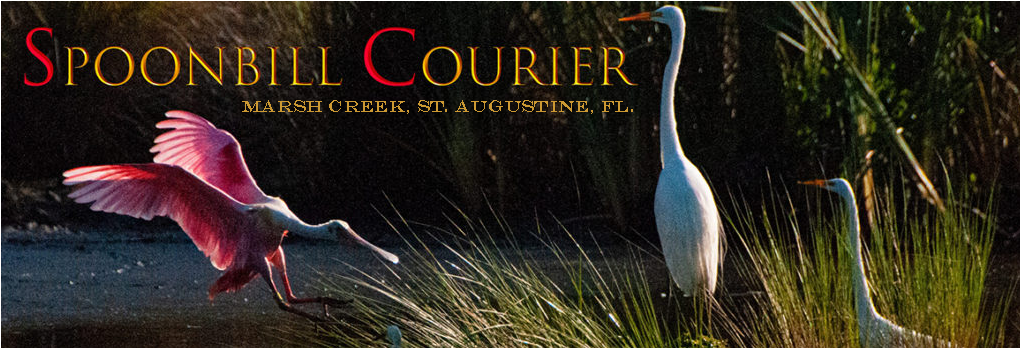
By Linda Oakley
At present, there are many Brazilian Pepper Trees in Marsh Creek. They are not Holly trees! Do yourself and your neighbors a favor and eradicate this plant from our environment. Following is highly plagiarized information from multiple sources. Feel free to Google and get even more info.
Brazilian Pepper Tree is causing many problems in native ecosystems. You can cut it, pull it up by the roots, spray it, and still it keeps coming back. It invades hammocks, pinelands, and mangrove communities and out-competes these native plants. It is an extremely aggressive invader which is very difficult to eradicate. The seeds are widely spread in the excrement of birds and mammals, and also by water. The tree produces a prolific crop of fruit which many birds consume and then spread wherever they have flown.
The tree produces a dense canopy which shades out all native plants. It sends up root suckers and new shoots when it is cut. Brazilian Pepper is in the same family of plants as Poison Ivy, Poison Oak, and Poison Sumac and thus can cause extreme skin irritation and cannot be burned. The state of Florida is spending millions of dollars every year in an attempt to control/eradicate Brazilian Pepper. When ingested the seeds cause violent purging. Brazilian pepper red berries and leaves can cause vomiting and the sap can cause a rash in sensitive people. Eating the seeds can result in death for humans and dogs!
Brazilian pepper-tree is native to Argentina, Paraguay, and Brazil. The species was brought into Florida in mid-1800 for use as an ornamental plant. Its bright red berries and brilliant green foliage are used frequently as Christmas decorations.
Control & Management
A range of options are available for management of this species including mechanical and chemical. Mechanical methods must be aggressive and remove the entire plant especially any roots. Brazilian pepper-trees can be controlled by cutting them down and treating the stumps with herbicide. A saw should be used to cut the trunk as close to the ground as possible. Within five minutes, an herbicide containing the active ingredient glyphosate or triclopyr should be applied carefully to the thin layer of living tissue, called the cambium, which is just inside the bark of the stump.
The best time to cut Brazilian pepper trees is when they are not fruiting. Seeds in the fruits can produce new Brazilian pepper trees. If fruiting Brazilian pepper trees are cut, care should be taken not to spread the fruits to locations where they might become established.
Caution: Brazilian pepper tree produces a sap that may result in contact dermatitis in some people. When cutting trees, avoid the sap if possible. Individuals who are highly sensitive to the sap may also be affected simply by touching the leaves. Use proper protective gear when cutting the tree and applying the herbicides.
Foliar Herbicide Application Foliar herbicide application can be used on Brazilian pepper tree seedlings and saplings. An herbicide containing triclopyr or glyphosate is applied directly to the foliage. Spray to wet, but not to the point of runoff. Good coverage is essential. Although both herbicides translocate throughout the plant, coverage on only one side of a tree with glyphosate or triclopyr will not completely kill it. Keep in mind that foliar applications require considerably more herbicide to control Brazilian peppertree. Take precautions to prevent herbicide drift injury to nearby plants.






I am very happy to see this article.
The category 1 non-native invasives, Brazillian pepper and Chinese tallow are spreading through our landscape at an alarming rate.
Just hope all our neighbors take it to heart and get rid of these monsters!!
I would like to see the MCHO engage a reputable firm to come into the neighborhood and visit every home on an appointment basis (with homeowner’s permission) to determine if these “monsters” are there, provide a quote for removal, and let the homeowner decide. Such a move might be a start at identifying and then eventually eradicating the infestation. Otherwise, many homeowners may not take the time to try to spot these trees themselves, much less deal with them.
There are at least two of us on Pinehurst Pl. who know well what a Brazilian Pepper looks like. If an owner can’t identify it from the pictures, maybe we need to post more and bigger pictures. If one needs to see a BP up close and personal, drive to the fitness center in the north parking lot, park looking north all the way down at the end of the lot and look at the VAST Brazilian Pepper that obscures the old broken down bridge. I’m happy to drive to anyone’s house and tell them if a suspicious plant is a BP. Maybe we could educate a “BP Street Ambassador” to identify them. Not necessary to pay someone for this simple process!
By coincidence, we had a landscaper due at our home today. He identified 5 Brazilian Peppers on our property!! We will obtain a quote, but it might be cheaper and more efficient to identify a worthy contractor willing to provide everyone with professional eradication in return for a fair price. Just sayin’ …